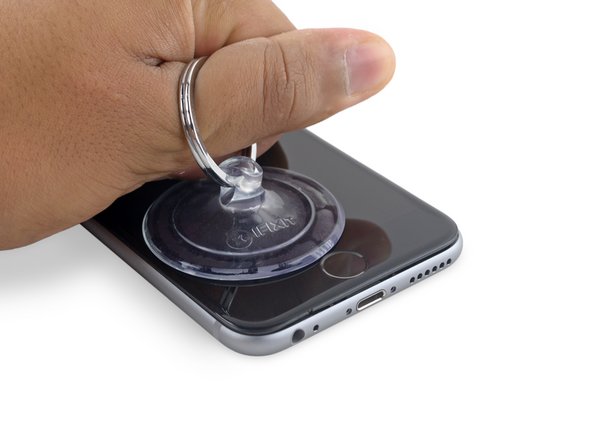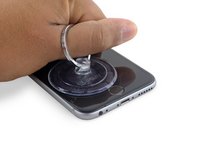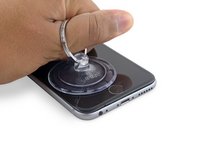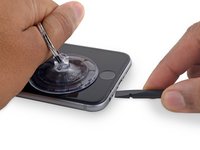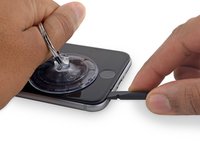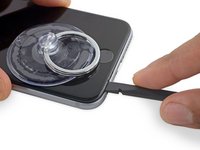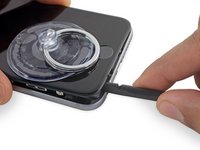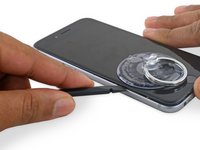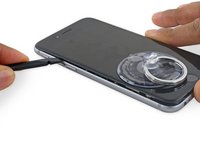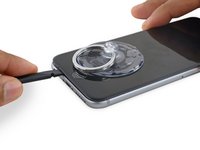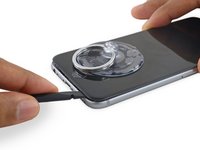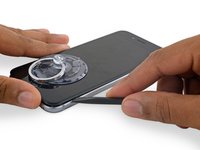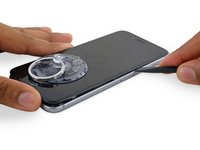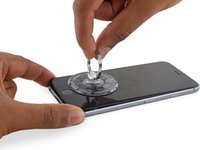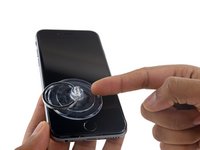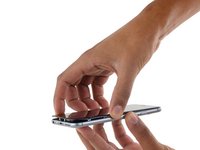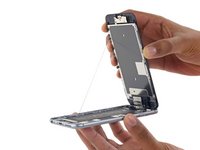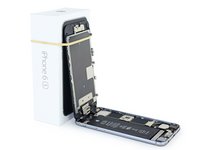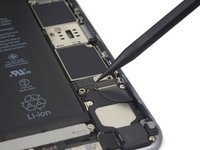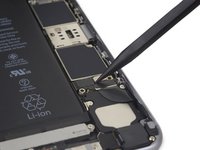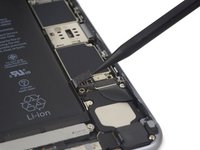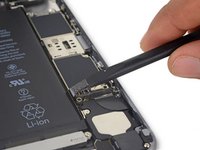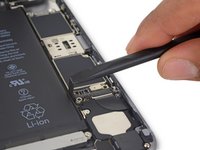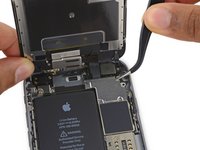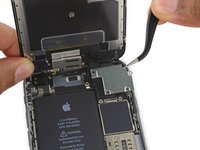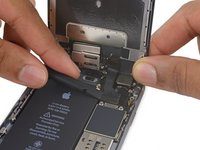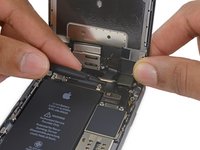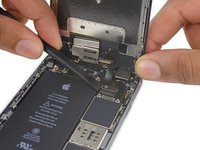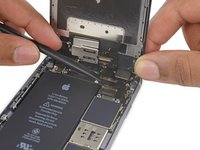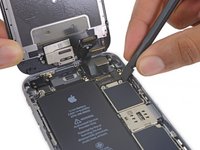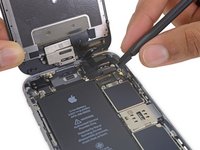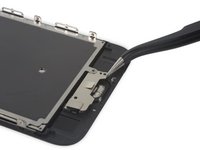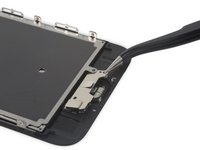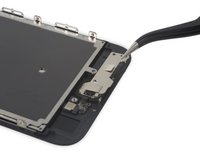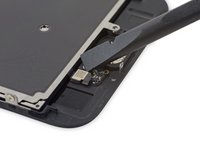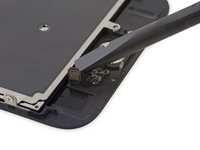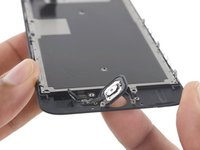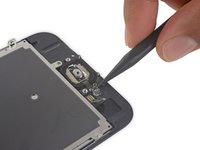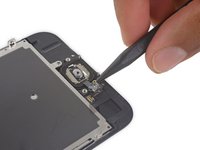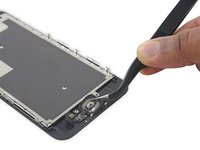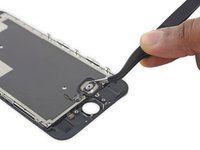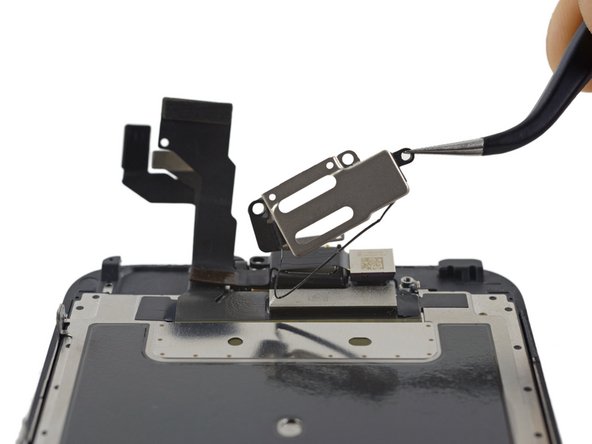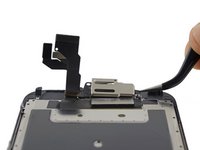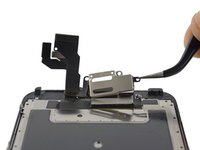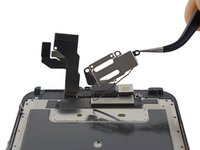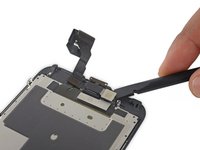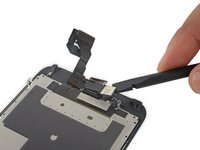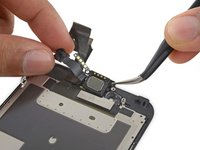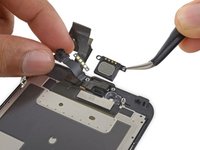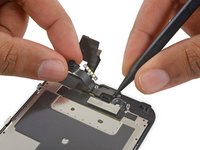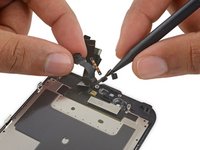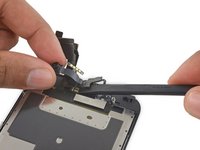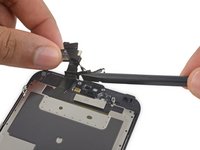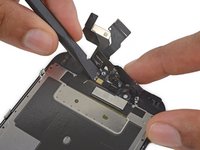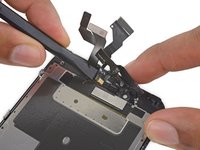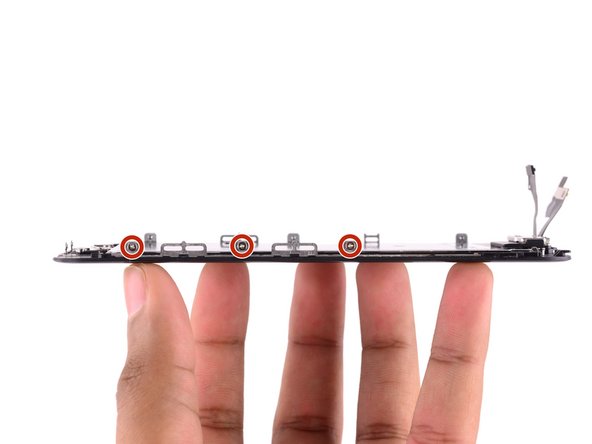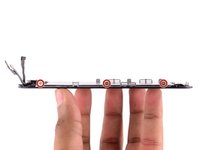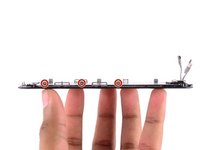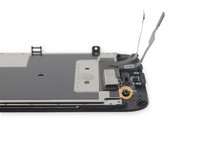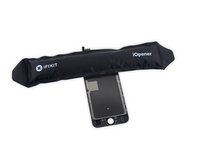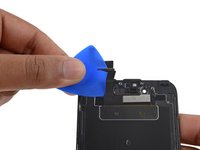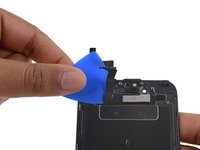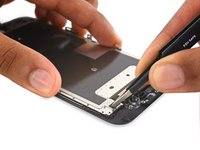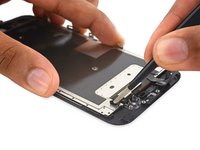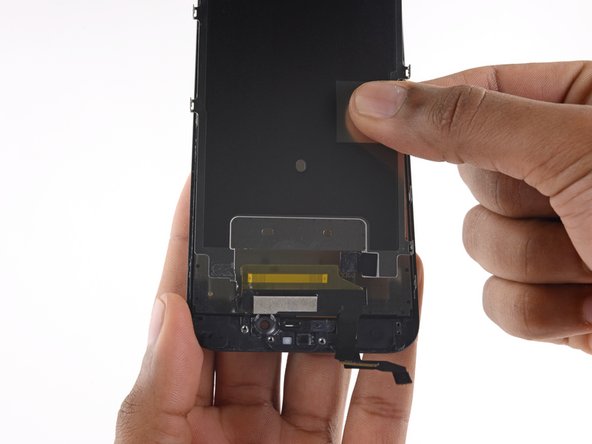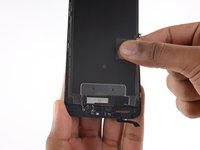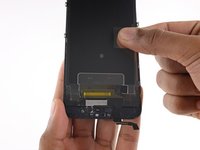crwdns2915892:0crwdne2915892:0
For an easier repair, use our fix kit and follow this shorter guide to replace your iPhone’s entire screen.
For more advanced fixers, this guide will help you replace only the iPhone’s LCD and digitizer assembly (a.k.a. the bare “front panel”). This requires you to transfer several components from your original screen to the new one before installing it—including the front-facing camera, earpiece speaker, LCD shield plate, and home button assembly.
For all screen/display repairs, it's important to transfer the original home button onto the new display in order for Touch ID (fingerprint scanning) to function.
You can also use this guide to replace the following parts:
- Front Panel Assembly Cable Bracket
- LCD Shield Plate
- LCD Shield Plate Sticker
- Front Facing Camera Holder
- Earpiece Speaker Mesh
crwdns2942213:0crwdne2942213:0
-
-
Remove the two 3.4 mm P2 Pentalobe screws on the bottom edge of the iPhone, on either side of the Lightning connector.
-
-
-
If your display glass is cracked, keep further breakage contained and prevent bodily harm during your repair by taping over the glass.
-
Lay overlapping strips of clear packing tape over the iPhone's display until the whole face is covered.
-
If the broken glass makes it difficult to get a suction cup to stick in the next few steps, try folding a strong piece of tape (such as duct tape) into a handle and lifting the display with that instead.
-
-
crwdns2935267:0crwdne2935267:0Clampy - Anti-Clamp$24.95
-
Pull the blue handle backwards to unlock the Anti-Clamp's arms.
-
Slide the arms over either the left or right edge of your iPhone.
-
Position the suction cups near the bottom edge of the iPhone just above the home button—one on the front, and one on the back.
-
Squeeze the cups together to apply suction to the desired area.
-
-
-
Pull the blue handle forwards to lock the arms.
-
Turn the handle clockwise 360 degrees or until the cups start to stretch.
-
Insert an opening pick under the screen when the Anti-Clamp creates a large enough gap.
-
Skip the next three steps.
-
-
crwdns2935267:0crwdne2935267:0Clampy - Anti-Clamp$24.95
-
Apply mild heat to the lower edge of the iPhone using an iOpener or hair dryer for about a minute.
-
-
-
Apply a suction cup to the lower left corner of the display assembly.
-
Take care not to place the suction cup over the home button.
-
-
-
Pull up on the suction cup with firm, constant pressure to create a slight gap between the front panel and rear case.
-
-
-
Place the flat edge of a spudger into the gap between the screen and rear case, directly above the headphone jack.
-
-
-
Twist the spudger to widen the gap between the front panel assembly and the rest of the phone.
-
-
-
Insert the flat end of the spudger on the left side of the phone, between the display assembly and rear case.
-
Slide the spudger up the side of the phone to separate the adhesive and pop the clips free.
-
-
-
Remove the spudger and reinsert it on the bottom edge, where you pried the phone open.
-
Slide the spudger to the right, along the bottom edge of the phone.
-
-
-
Slide the spudger up the right side to continue separating the adhesive and popping the display clips free from the iPhone.
-
-
-
Use the suction cup to open the display, breaking the last of the adhesive.
-
-
-
Pull up on the nub on the top side of the suction cup to remove it from the front panel.
-
-
-
Gently grasp the display assembly and lift it up to open the phone, using the clips at the top of the front panel as a hinge.
-
Open the display to about a 90º angle, and lean it against something to keep it propped up while you're working on the phone.
-
Add a rubber band to keep the display securely in place while you work. This prevents undue strain on the display cables.
-
During reassembly, pause here if you wish to replace the adhesive around the edges of the display.
-
During reassembly, the camera end of the screen body needs to hook under the edge of the body. The hooks of the screen frame need to be under the rim of the main body and snugged toward the camera end to easily close the cover and have it properly clip.
-
These hooks are not really a proper hinge but clasps that need to be under the rim of the main phone frame/edge!! This way the screen easily will return to its closed state nicely gently snapping into place.
-
During reassembly, reverse order for getting the screen clipped back in means pressing along the right side top to bottom corner. Then the left.
-
-
-
crwdns2935267:0crwdne2935267:0Magnetic Project Mat$19.95
-
Remove two Phillips screws securing the battery connector bracket, of the following lengths:
-
One 2.9 mm screw
-
One 2.2 mm screw
-
-
-
Remove the battery connector bracket from the iPhone.
-
-
-
Use the point of a spudger to disconnect the battery connector by prying it straight up from the logic board.
-
-
-
Push the battery connector away from the logic board until it stays separated from its socket, so as to avoid any accidental connection to the battery while you work.
-
-
-
Remove the following four Phillips screws securing the display cable bracket:
-
Three 1.2 mm screws
-
One 2.8 mm screw
-
-
-
Use a spudger or a clean fingernail to disconnect the front camera flex cable by prying it straight up from its socket on the logic board.
-
-
-
Disconnect the digitizer cable by prying it straight up from its socket on the logic board.
-
-
-
Disconnect the display cable by prying it straight up from its socket on the logic board.
-
-
-
Remove the three 1.7 mm Phillips screws securing the home button bracket.
-
-
-
Lift the lower edge of the home button bracket until it clears the small peg on the right side.
-
Slide the bracket out from under the EMI shield to remove it.
-
-
-
Use a spudger to disconnect the home button connector by popping it out of its socket on the back of the display panel.
-
-
crwdns2935267:0crwdne2935267:0iOpener$24.99
-
Apply mild heat (with an iOpener, heat gun, or hair dryer) to soften the adhesive securing the home button gasket.
-
Using your fingertip, gently press up on the home button from the front side of the display assembly. Use firm, constant pressure to slowly separate the home button's rubber gasket from the front panel.
-
-
-
Use the pointed tip of a spudger to carefully separate the home button flex cable from the back of the display panel.
-
-
-
Remove the following three Phillips screws securing the earpiece speaker bracket:
-
Two 2.3 mm screws
-
One 1.9 mm screw
-
-
-
Lift up and remove the earpiece speaker bracket, peeling up the bracket gasket as you go.
-
-
-
Use the flat end of a spudger to nudge the front-facing camera from its housing.
-
-
-
Pull back the front-facing camera to access the earpiece speaker.
-
Remove the earpiece speaker.
-
-
-
Holding the front-facing camera out of the way, use the point of a spudger to push the ambient-light sensor up out of its recess in the front panel.
-
-
-
Fold the front-facing camera and sensor cable up to allow access to the microphone.
-
-
-
Use the flat end of a spudger to gently break up the adhesive securing the microphone to the front panel.
-
-
-
Remove the front-facing camera and sensor cable.
-
-
-
Remove the following seven 1.3 mm Phillips screws:
-
Three screws each on the left and right edges of the display panel.
-
A single screw recessed 1.5 cm from the right edge of the screen.
-
-
-
Prepare an iOpener and lay it over the top edge of the phone to loosen the tape connecting the EMI shield to the front panel.
-
After a minute, insert an opening pick between the tape and display data cable.
-
Push the pick downwards until it is flush with the upper edge of the EMI shield.
-
-
crwdns2935267:0crwdne2935267:0Tweezers$4.99
-
Use a pair of tweezers to peel up the piece of tape from the EMI shield, near the front camera housing.
-
-
-
Only the LCD and digitizer remains.
-
To reassemble your device, follow these instructions in reverse order.
crwdns2935221:0crwdne2935221:0
crwdns2935229:0473crwdne2935229:0
crwdns2947412:050crwdne2947412:0
Swapping out the home button/main board flex cable on the iPhone 6 disabled TouchID. I assume it was also digitally signed like the home button. Is this also true of the 3D Touch panel now that it supplies that cable? In short, Is the original 3D Touch panel necessary for TouchID to work or will the replacement 3D Touch panel built into the replacement work?
I've had touchID work after replacing the flex cable... I cant imagine there would be a problem with it this year...
Andrew -
Does the 6S need the home button flex cable to be moved for touch ID to work like the 6?
Nope! The home button flex cable is integrated into the display and cannot be transferred to the new one.
And then on the Iphone 6s the original flex cable hasn't to be moved. Only the button itself because it is paired with the CPU.
revher -























